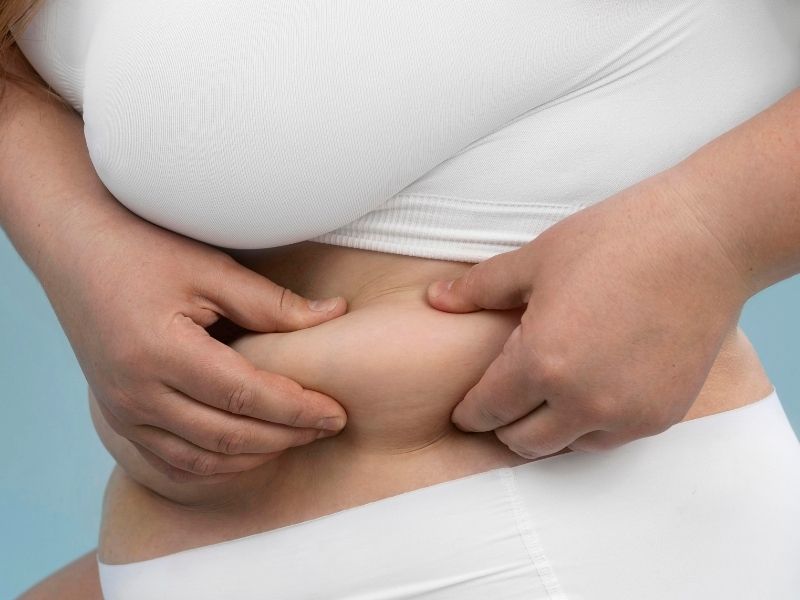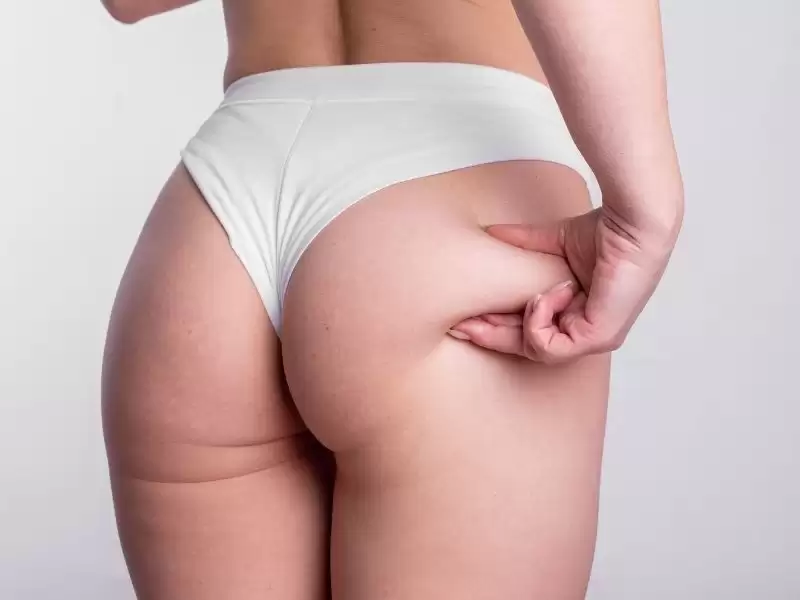Abdominoplasty is preferred to tighten sagging skin in the belly and abdominal area and achieve a more youthful-looking body. This cosmetic surgery procedure is commonly performed by women after pregnancy. However, in recent years, men have also been opting for this cosmetic intervention as much as women. The tummy tuck procedure, which can be described as the removal of loose fat tissue from the abdominal wall, eliminates unsightly appearance that cannot be resolved through exercise and diet. Those who want a flat stomach and have no health contraindications for surgery can undergo this procedure.
The abdominal area is the region where the most fat tissue accumulation occurs when weight is gained. Excessive weight gain and loss, as well as pregnancy, can lead to bulging and sagging of the abdominal wall. The resulting deformities can vary in severity. Patients often express that no clothing fits them well. We find it appropriate to apply different surgical methods for sagging of varying degrees.
For individuals with low-grade sagging only in the lower abdominal region, we perform a mini-abdominoplasty, also known as a mini tummy tuck, which also removes scars and stretch marks in this area. The area around the navel is not cut. The abdominal muscles can be slightly tightened. A scar resembling a cesarean section scar remains in the lower abdominal region.
Liposuction is also performed in conjunction with liposhaping, a method of reshaping fat tissue, to remove excess fat from the waist and hip areas.
In most patients, liposuction is also required along with abdominoplasty. Otherwise, reshaping only the abdominal area without correcting other areas outside the abdomen does not yield the desired results. Addressing the body as a whole and correcting deformities in other areas helps the patient appreciate the outcome more.
How is a Tummy Tuck Performed?
Before this surgery, also known as abdominoplasty, the doctor must perform a detailed analysis. The sagging and cracked skin area at the level of the cesarean scar is marked. Then, the problematic skin up to the navel is removed. The remaining skin is pulled downwards. The navel is also re-created to match the new appearance. If the patient also has excess fat, liposuction may be performed after this procedure. During the tummy tuck, the abdominal muscles are tightened with stitches placed in the abdominal wall. Furthermore, since cosmetic stitches are used, there will be no visible scarring in the area after surgery. If there is excess fat under the skin, liposuction is performed on the patient before the abdominoplasty surgery. Following liposuction, an incision is made at the level of the pubic bones, hidden within the underwear line. The abdominal skin is lifted up to the rib cage, and the loosened abdominal muscles are sutured together to tighten them. After the procedure, the navel is repositioned. Depending on the patient's condition, either a full tummy tuck or a mini tummy tuck may be performed.

Why is a Tummy Tuck Performed?
Exercise and diet programs may not be sufficient for some individuals to eliminate excess fat accumulation and skin sagging in the body. In such cases, individuals who opt for abdominoplasty aim to correct body contour deformities resulting from either genetic factors or significant weight fluctuations or pregnancy. The reasons for abdominoplasty can be listed as follows:
- Aging
- Shape deformities resulting from pregnancy
- Genetics
- Weight gain and loss
- Inability to lose body fat through diet
- Sagging skin that cannot be eliminated through exercise
What Are the Types of Tummy Tuck (Abdominoplasty) Surgery?
Tummy tuck surgeries are determined based on the patient's physiological structure and needs. Today, tummy tuck surgery can be performed in three different ways. Abdominoplasty methods are as follows:
- Abdominoplasty (Full Tummy Tuck): There are two types of this method. They are classified as those where the navel is repositioned and those where it is not repositioned. Abdominoplasty surgery is performed in different ways depending on the area where it is applied and the procedure performed. These types can be briefly listed as follows:
- Mini-Abdominoplasty (Partial tummy tuck): It is performed according to the patient's needs. Mini Abdominoplasty is performed by making an incision in patients with excess fat under the navel. During this procedure, the navel does not change position.
- Full Abdominoplasty: This procedure involves making an incision in the area known as the cesarean section area to remove excess skin and fat and remove stretch marks. During this operation, the position of the navel must be very carefully planned. Experts also recommend liposuction in conjunction with full abdominoplasty.
- Fleur-de-lis Abdominoplasty:This procedure is performed on patients with excessive skin laxity following significant weight loss or childbirth. The procedure is performed by making an incision in the cesarean section area.
- Panniculectomy: This is performed more for medical reasons than for cosmetic surgery. Excess skin tissue and sagging skin can lead to serious diseases as a result of exposure to infection. Therefore, it is performed in the lower abdominal area to alleviate patients' complaints.
- Reverse (Inverted Tummy Tuck): This is a procedure where the surgical scar is located under the breasts.
Mini Tummy Tuck
In some individuals, there may only be sagging tissue below the belly button. In these cases, excess tissue is removed using the mini tummy tuck (mini abdominoplasty) method, and the underlying muscle layer is tightened. The skin is then tightened to achieve a flatter appearance.
For individuals with sagging and deformities throughout the entire abdominal area, an additional incision is made around the navel to give the navel a more aesthetically pleasing appearance. Mini tummy tuck surgery takes between 1-2 hours. Mini tummy tucks can be performed under local anesthesia in addition to general anesthesia, but this is not often preferred to avoid negatively affecting the patient psychologically.
How Long Does a Tummy Tuck Take?
Abdominoplasty, also known as total abdominoplasty, generally takes between 3 and 3.5 hours. However, this duration may vary depending on the individual. Depending on the width of the abdomen, the surgery duration may extend up to 4 hours. After the surgery, the patient is kept under observation in the hospital for a few days.
What Are the Risks of Tummy Tuck Surgery?
It is very important to follow the doctor's recommendations before and after abdominoplasty surgery. Otherwise, a number of serious health problems may arise. There is a high risk of problems such as wounds not healing and infection, seroma formation, misplacement of the navel, and wound dehiscence. However, in abdominoplasty surgeries performed by specialized surgeons in a fully sterilized environment, risk factors are minimized.
Before Abdominoplasty Surgery
On the day of surgery, it is recommended that the patient take a shower to feel comfortable. Accessories, perfume, deodorant should not be used, and makeup should not be applied. It should be remembered that a relative who can take care of the patient on the day of surgery should be present and that the patient should arrive on time for surgery.
After completing the routine procedures at the hospital entrance, you can proceed to your room. Medical staff will assist you in settling into your room and preparing for surgery. A nurse will perform some checks in your room. Urine and blood samples will be taken, and your weight, height, and blood pressure will be measured. The hospital will provide you with specially designed stockings to prevent blood clots from forming in your legs.
The surgeon will visit you before you go into surgery. You can ask the surgeon any questions you may have or discuss any concerns you may have. If you have not already done so, you will be given a consent form. You should allow enough time to read the consent form carefully and ask any questions you may have without hesitation.
Things to Consider Before Abdominoplasty
Tummy tuck surgery is a very important and detailed surgical process. There are certain points that patients should pay attention to during this process. These points can be listed as follows:
- Avoid exposure to the sun.
- Do not take aspirin or vitamin E supplements.
- Do not follow strict diet programs.
- Protect yourself from colds.
- Protect yourself from infection.
- Do not consume foods that may cause constipation before abdominoplasty.
- Do not take blood thinners.
- People who smoke and drink alcohol must quit these habits at least 2 weeks before surgery.

- In addition, following your doctor's instructions completely will ensure that your surgery goes smoothly and facilitate your post-operative recovery process.
- It should not be used in patients who are obese,
- are planning to become pregnant in the future,
- are taking blood thinners,
- or have blood disorders.
- Foods that may cause constipation should not be consumed.
- The use of aspirin and blood-thinning medications should be discontinued.
- Activities such as excessive exercise, very low-calorie diets, and sunbathing should be avoided.
- A balanced and healthy diet should be maintained.
- If possible, walking and meditation should be done outdoors. This will help you feel psychologically well before your abdominoplasty surgery.
After Tummy Tuck Surgery
Achieving a toned and well-defined abdominal area requires several conditions. First and foremost, we must make significant sacrifices to achieve the desired abdominal area and body shape. We must strengthen our abdominal muscles through exercise and develop a tight muscle-fascia system that supports our organs like a corset. With proper nutrition, we must reduce our body fat percentage and ensure that a taut and thin layer of skin forms so that the abdominal muscles are visible on the surface.
After an abdominoplasty, it is usually necessary to stay in the hospital for 1-2 days. While resting, there is little pain, but when standing up, varying degrees of pain and restriction may be felt. Patients can return to work after 7-10 days.
Pain and swelling may occur in abdominal movements during the first few days after shaping the abdominal muscles and the membrane structure above them. Painkillers should be used to minimize these sensations. Serious pain is not usually expected in procedures performed only on the skin and subcutaneous fat tissue.
Things to Consider After Abdominoplasty
Following abdominoplasty surgery, the patient must be very careful during the recovery process. In addition, they must strictly adhere to the doctor's recommendations and follow the prescribed regimen. Maximum protection must be ensured against the risk of infection following abdominoplasty surgery.
To help you understand what to expect after a tummy tuck, it is beneficial to know what to anticipate. You may still feel some pain even 1-2 months after the procedure. You should be patient as your body will heal over time. The scars will generally be at their worst 3 months after the operation. Keep in mind that the scars will flatten over time.

Swelling, bruising, and pain in the abdominal area are normal. Necessary painkillers will be recommended by the doctor.
- The healing period for major swelling and bruising is 1 month, while general swelling takes 6 months to subside.
- If there are no complications after surgery, the patient is fed with liquids for 24 hours.
- An abdominal corset must be worn for 4-6 weeks after surgery.
- To avoid straining the stitches, walking in a slightly bent position is recommended for the first few days.
- A thin scar will remain, which will gradually fade and become less visible. However, this scar will be under underwear and a bikini.
- To ensure a smooth recovery process with minimal pain after abdominoplasty surgery, the patient must strictly follow the doctor's instructions. Otherwise, unwanted situations such as infection, excessive pain, and inflammation may occur.
Recovery Period After Tummy Tuck Surgery
The hospital stay following a tummy tuck surgery typically ranges from a few hours to a few days. The recovery process may vary depending on the individual's metabolism and quality of life.
It is quite normal to experience mild pain and discomfort for a few days after the surgery. In this case, you can use the antibiotics and painkillers prescribed by your doctor. Consulting your doctor about issues such as when you can take a shower will also speed up the recovery process. The stitches under the skin are cosmetic stitches, so they dissolve and disappear. The stitches on the skin surface are removed about a week after surgery. You will gradually start walking a week after surgery. Starting light exercises and activities contributes to a quick recovery.
After surgery, patients are monitored in the hospital for one day, then discharged and sent home, and can return to their normal daily activities within about a week after surgery.
What Should Your Diet Be Like After a Tummy Tuck?
It is not the case that people do not gain weight after abdominoplasty. Therefore, there are nutrition programs that must be carefully followed to avoid weight gain after abdominoplasty. Instead of following strict diet programs after surgery, individuals should follow a balanced and healthy nutrition program. This will prevent unwanted weight gain and allow you to achieve this without compromising your health.
For 1-2 days after the operation, the patient should only consume liquids. You should wait a while before eating even small, light meals. If you experience nausea and vomiting more than twice, you can call your doctor to get through the process and avoid experiencing these symptoms again later. Excessive vomiting after surgery can cause bleeding that may require surgical intervention in the lower region of the skin.
The individual should take care to consume plenty of protein in the days following the operation. The body will need fluids and protein to support its desire to heal and to maintain its normal functions while doing so. It may take time for appetite to return to normal immediately after the operation. Among the reasons why it takes time for appetite to return to normal is that the body is reacting to the painkillers used and the changes made. A lack of appetite does not mean you should avoid eating.
If you have trouble maintaining a balanced diet, which is essential after surgery, you can ask your doctor for help. Your doctor may recommend drinking protein shakes to ensure you are getting the nutrition you need during this process. Protein shakes have a positive effect on the healing process and are also easy to prepare.
Is Dieting Necessary After Tummy Tuck Surgery?
Instead of thinking about dieting after surgery, the patient should follow a balanced and healthy nutrition program. They should not neglect to add protein, vegetables, and fruit to their daily diet program in order to provide the body with the energy it needs.
Drinking plenty of fluids after the operation is advisable. Patients may generally want to avoid drinking plenty of water because they feel nauseous, but drinking plenty of water speeds up the healing process. Since vitamins fight infection, care should be taken to consume ample amounts of vitamins A and C. The minimal bruising expected after a tummy tuck is achieved thanks to vitamins. Salty foods cause the body to swell and should be avoided after surgery.

It should not be forgotten that carbonated beverages can also cause bloating. If the individual successfully loses weight in a healthy manner after the operation, there is no need to repeat the tummy tuck surgery. However, if the individual gains excessive weight again after the tummy tuck surgery and loses it, they may need to undergo the operation again. Future pregnancies, in addition to weight gain, can also reverse the effects of the operation you have undergone. The results of tummy tucks are better and longer lasting in people with tighter abdominal skin and flatter stomachs. The likelihood of recurrence also decreases accordingly.
Pregnancy After Tummy Tuck Surgery
One of the most frequently asked questions about tummy tuck surgery is whether the abdomen will become deformed again if pregnancy occurs after the operation. This procedure does not adversely affect the pregnancy process. However, the postoperative recovery process must be completed before pregnancy.
For those who wish to have tummy tuck surgery after pregnancy and childbirth, the ideal time is recommended to be one year after delivery. During this period, the mother is expected to lose weight through regular nutrition and breastfeeding. This is because the stretch marks and sagging skin that occur after childbirth must be correctly identified. Women who are one year past childbirth and do not plan to become pregnant again can undergo tummy tuck surgery. If another pregnancy is planned, the cosmetic surgery should be postponed.
Frequently Asked Questions About Tummy Tuck Surgery
How long does it take to recover from a tummy tuck?
The recovery period after a tummy tuck varies depending on factors such as age and skin structure. Therefore, full recovery usually takes between 3 to 9 months.
Is a tummy tuck risky?
As with any surgery, there are risks associated with a tummy tuck. These risks may include fluid accumulation in the body during surgery, risk of wound infection, blood clot formation, or hematoma (blood accumulation).
Will there be scars after a tummy tuck?
There will be a scar after a tummy tuck surgery. However, since the scar is located below the navel area, it is not visible when wearing clothing that exposes the midsection.
When can the compression garment be removed after a tummy tuck?
The use of a compression garment after a tummy tuck typically lasts about 4–6 weeks. It can be removed after this period.
How long does a tummy tuck surgery take?
A tummy tuck operation usually takes about 3 to 3.5 hours. Depending on the extent of the abdominal area, the procedure may take up to 4 hours.
What should be considered after a tummy tuck surgery?
After a tummy tuck, it is important to avoid sudden movements, not lift heavy objects, stay well hydrated, avoid tight clothing, and protect the abdominal area from impact.
Does a tummy tuck help with weight loss?
A tummy tuck is not a weight loss procedure. It is performed to remove excess skin and fat following weight loss.






